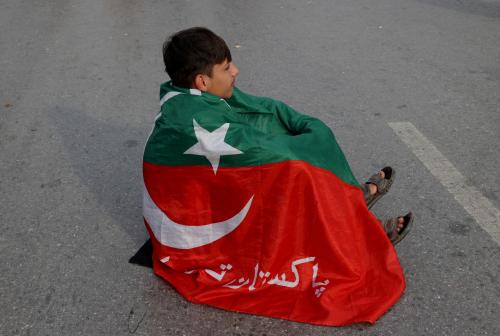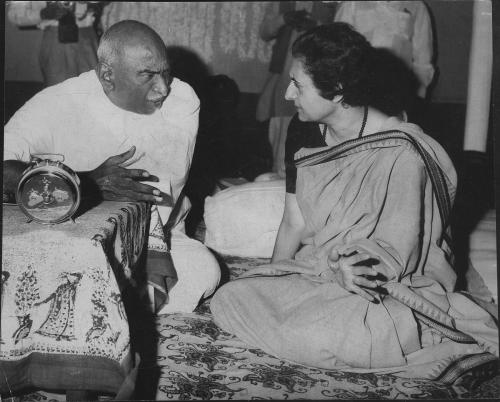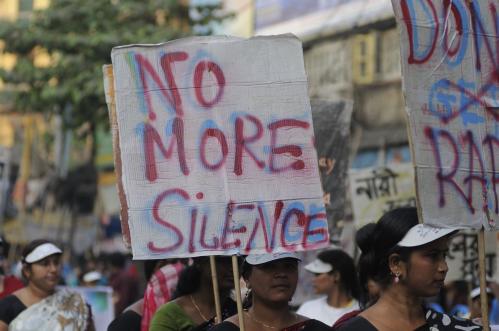Singapore turns 50 this year. The celebrations of independence are going to be spectacular, if all the preparations being made across the island are any clue. But middle age is also causing some self-reflection, and a little disquiet.
After an extraordinary first half century in which GDP per capita increased a hundredfold, Singapore is seeing its growth slowing, workers ageing, and anxiety rising. The question lurking behind the celebrations is: what now?
Singapore is, as a nation, an archetypal rags-to-riches story. A sudden break away from the Malaysian Federation in 1965, just two years after the end of British rule, thrust Singapore into independence. Necessity was the mother of invention. A new nation with no natural resources, the city-state could only grow by expanding its position as a hub for international trade, and by investments in infrastructure and human capital.
Geography has been a critical factor, of course. Singapore may be known as ‘a little red dot’, but that dot is smack in the middle of the Asian economic growth engine. Some Indian businessmen live here because it is easier to fly to many Indian cities from Singapore than India itself. Changi airport regularly ranks number one in the world, and is about to get another round of investment.
As Singaporeans take stock in their Jubilee year, they have plenty to be proud of and grateful for. But they are also aware that Singapore’s ongoing success cannot be taken for granted. In his provocatively titled book Can Singapore Survive? diplomat and writer Kishore Mahbubani highlights three potential risks: de-globalization, conflict between the U.S. and China, and pandemics.
In Mahbubani’s terms, “Singapore has succeeded in spectacular fashion because it has been the best surfer on the tidal wave of globalization.” Singapore relies on globalization, with the highest trade-to-GDP ratio in the world, averaging around 400 percent in recent years. Any retreat from the free movement of goods and capital, perhaps led by first-world politicians worried about jobs at home, would hit Singapore very hard indeed.
Likewise, Singapore is vulnerable to any deterioration in Sino-American relations. While not technically an ally, Singapore is tied to the U.S. with various security agreements and the two offer mutual aid. Singapore provided Chinook helicopters to assist in the aftermath of Hurricane Katrina, for instance. But three-quarters of Singaporeans are ethnic Chinese, and there are strong cultural and economic ties to China. Washington was not pleased when Singapore joined the China-led Asian Infrastructure Investment Bank (AIIB). (Some of the pressure lessened, perhaps, when both the U.K. and Israel joined). Unabashed, Singapore hosted and co-chaired the first meeting of the AIIB members earlier this year.
Third on Mahbubani’s risk list is a pandemic. As an open economy, tourist destination and trading nation, Singapore is exposed. The SARS outbreak in 2003 took 33 Singaporean lives, and also shook business confidence and halted the tourist trade: the economy barely grew that year. If a similar pandemic catches Singapore, the damage may be far worse.
It would be wise for Singapore’s government to consider and prepare for these dangers: and you can bet it is. But none of them can be considered likely. The greatest threat to Singapore may in fact be that its success breeds stasis. Specifically, there is a risk that as Singapore matures, it will lose the meritocratic impulse that has been a big factor in her success.
Universal access to good schools and good jobs was seen from the very beginning as vital to Singapore’s success, both in terms of maintaining harmony between its racial groups – Chinese, Indian or Malay, for the most part – and to boosting competitiveness and innovation.
The danger is that that, like many 50 year olds, Singapore simply settles down and becomes less dynamic, both as a society and as an economy. Social security could start to take a much higher priority than economic opportunity. Big risks will be less likely to be run, for the sensible reason that there is now much more to lose.
Worst of all, the class barriers the founders of Singapore fought hard to bring down may reassert themselves as affluent Singaporeans find ways to pass on their higher status to their children. For a country priding itself on a fierce meritocracy, a decline in social mobility would be at the very least an embarrassment and more likely a significant blow to future economic prospects.
Many in the political class are aware of this danger. Indeed, the Deputy Prime Minister and Finance Minister Tharman Shanmugaratnam dedicated his 2015 budget to the ideal of social mobility, which he said must remain “part of our Singapore identity.”
Wrapping up his Budget speech, he said: “Social mobility is the defining challenge in every advanced country today. We’re fortunate that Singapore has so far done relatively well. It is actually still a more fluid society than most.”
The Minister then cited statistics showing that relative mobility from the bottom rung of the income ladder is much higher than in the U.S. or U.K., and perhaps even higher than in Scandinavia. In fact there is still a live scholarly debate about the extent of relative intergenerational mobility. Prof Irene Ng, from the National University of Singapore, believes rates are much lower. It is rather striking that the Prime Minister Lee Hsien Loong is the son of the long-term Prime Minister Lee Kwan Yew. One-party rule has been the norm. Some policies, for example on gay rights, remain stuck in the pre-modern era.
But the Deputy Prime Minister’s point still holds: Singapore is an open economy and a broadly meritocratic society, where birth is not destiny. Whether it retains the reality of its meritocratic ideal may determine how the second half of Singapore’s first century turns out.



Commentary
Op-edSingapore at 50: Can meritocracy flourish?
July 21, 2015